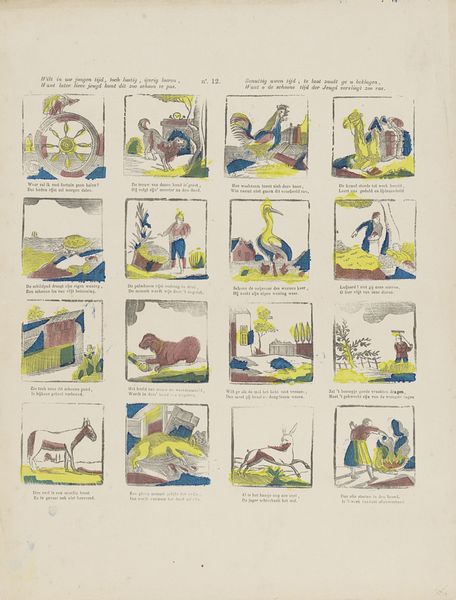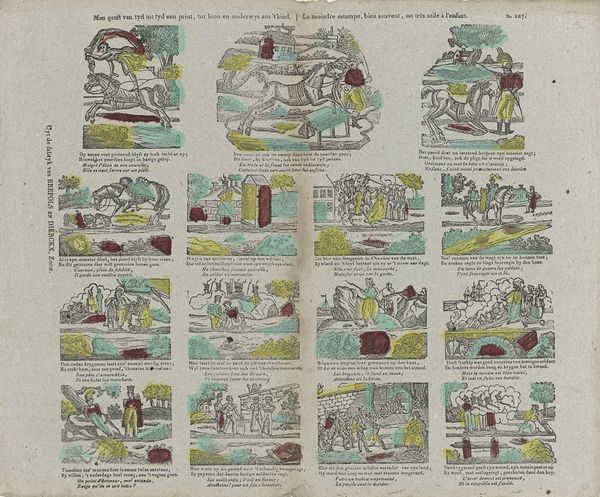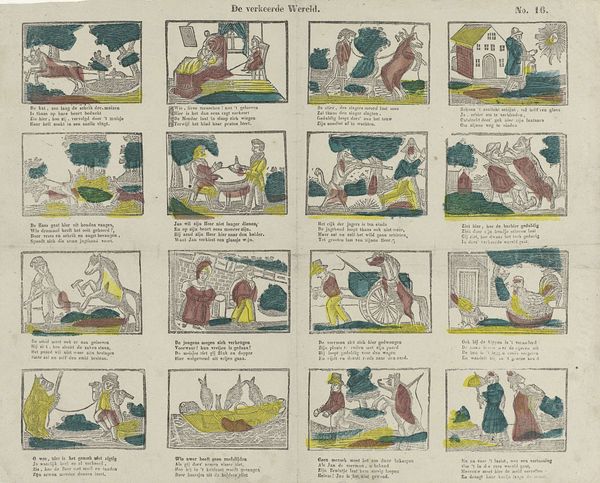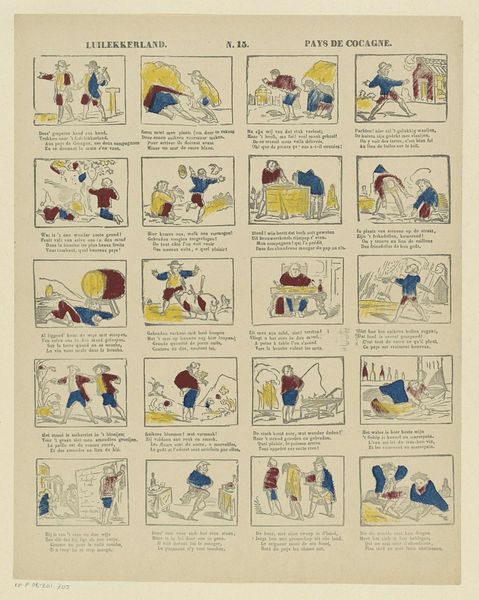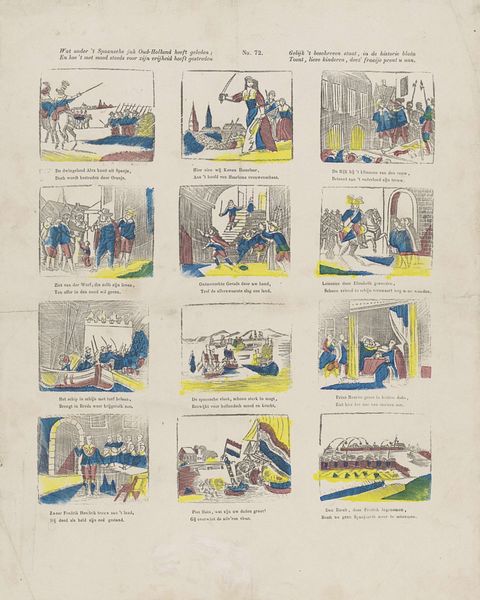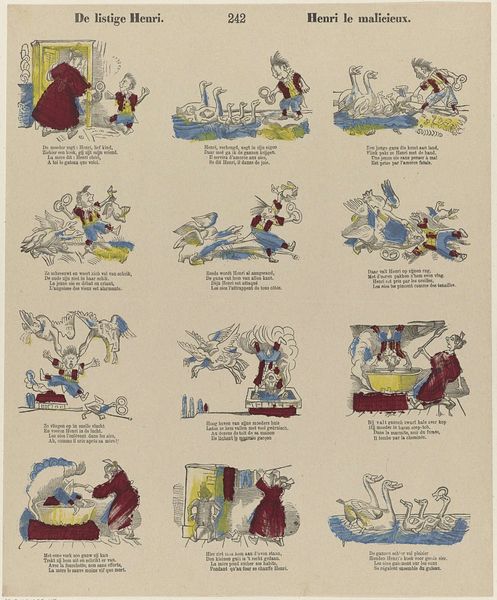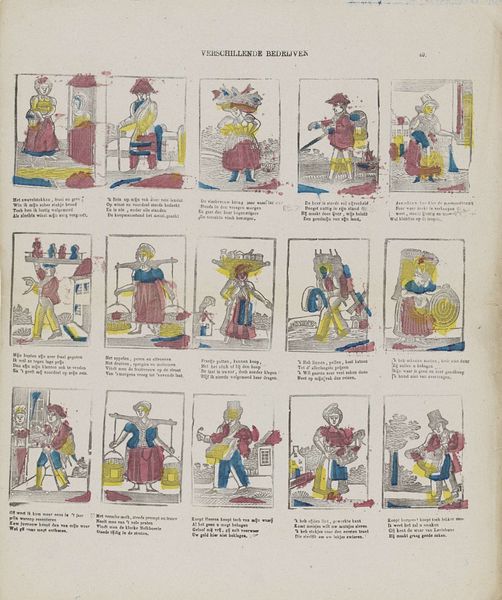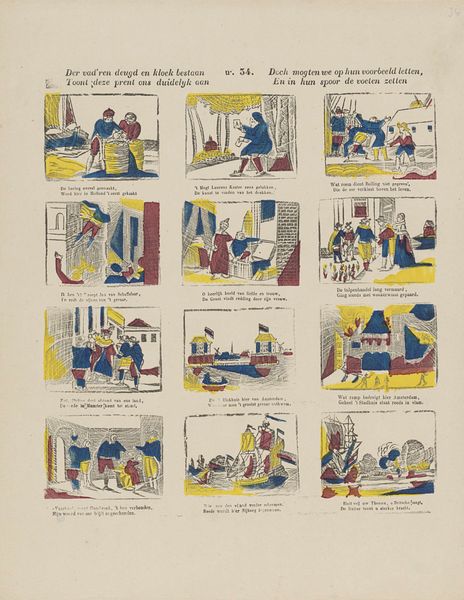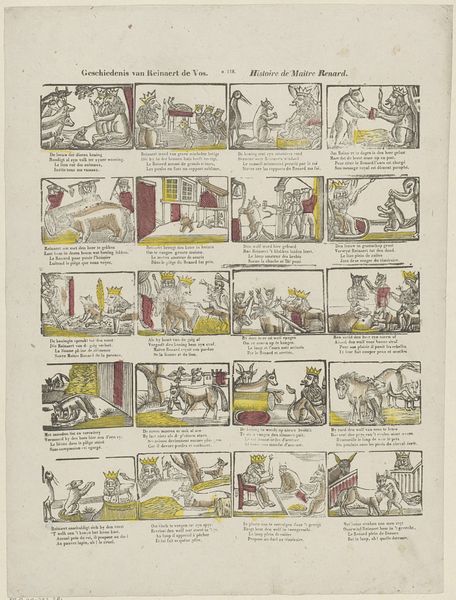
#
comic strip sketch
#
quirky sketch
#
narrative-art
#
dutch-golden-age
# print
#
sketch book
#
personal sketchbook
#
idea generation sketch
#
sketchwork
#
thumbnail sketching
#
folk-art
#
comic
#
sketchbook drawing
#
storyboard and sketchbook work
#
sketchbook art
Dimensions: height 314 mm, width 410 mm
Copyright: Rijks Museum: Open Domain
Curator: This lithograph, titled "De verkeerde wereld", or "The World Upside Down", dates from between 1848 and 1881. It’s a Dutch print now held in the Rijksmuseum, created by the firm Lutkie & Cranenburg. What do you make of it? Editor: Oh, wow, it's like a bizarre storyboard! Very dreamlike—or maybe nightmarish. Everything feels subtly off, the colors are oddly vibrant... is that supposed to be charming? Curator: The "World Upside Down" theme was quite popular, used to satirize social norms and hierarchies, especially in times of upheaval. Prints like these provided a visual and accessible way to comment on contemporary issues. It's intriguing Lutkie & Cranenburg tackled it. Editor: Uprising, you say? I could see these animals on their hind legs storming the Bastille—except they'd be liberating all the carrots and head lettuce. Look how confidently that rooster struts, ready to make soup out of anyone. There is rebellion in the air, indeed. Curator: It certainly does present topsy-turvy scenes, animals acting as humans and humans as animals. Look closely and you’ll see how they've depicted that…the details serve to amplify the statement being made about the real world. How deeply ingrained this 'proper order' must have been for such a blatant distortion to land with impact. Editor: It is a striking kind of visual rhetoric. Take the image with the hare holding a rifle on his shoulder, he's standing proudly as hunters cower with hands in the air and no guns, right? I would definitely call that the hunter turned hunted, which means someone is paying attention to this status shifting in the most comical way. That hunter really makes me laugh! Curator: Consider too the printing process. Lithography allowed for relatively mass production. These weren’t elite artworks hanging in galleries; they were designed for broader consumption. To reach a general audience with political commentary in a period of revolution or resistance gives their work another level of meaning. Editor: Which makes it all the more potent, doesn’t it? That subversion wasn’t confined to parlors of the rich. I can easily see someone using a page torn straight from here as the best kind of revolutionary calling card. Curator: I hadn't quite pictured it that way, but I can see that possibility—the world truly turned on its head! Editor: Definitely. Now, all this image needs is to find its way into an animated short, preferably stop-motion. What an inspiration.
Comments
No comments
Be the first to comment and join the conversation on the ultimate creative platform.
